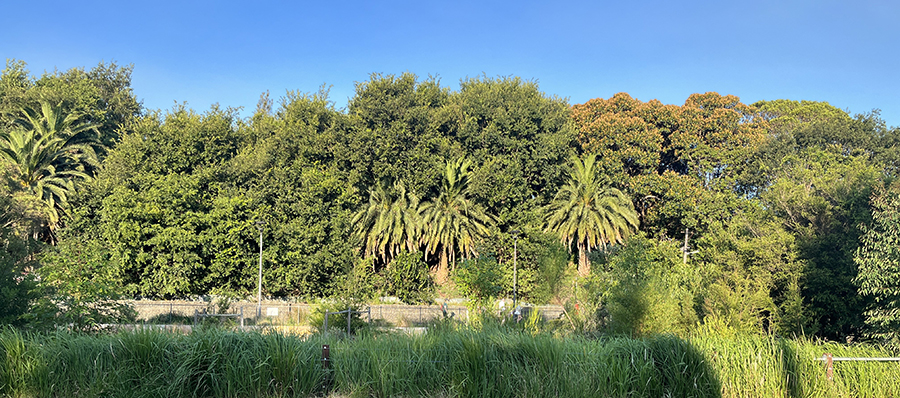Andrew Wood, Blue Wren Subcommittee Convenor, Bulletin 2/2024, April
Last month, the University of Sydney deposited its cheque for $29,000, the initial payment from the Society for the City of Sydney’s Innovation and Ideas Grant entitled ‘Glebe’s Hill – unravelling its biodiversity secrets and potential’. A final payment of $10,000 will be made at the end of the year when the Society receives the University’s report about its research studies.
On Wednesday, 28 February, the President and four members of the Blue Wren Subcommittee met in the office of Professor Dieter Hochuli, leader of the University of Sydney’s Integrative Ecology Group, to draw up a work plan for 2024.

The project’s aims and objectives are:
- Could Glebe’s Hill become an urban wildlife refuge? An investigation will determine the current values of the fauna and flora at the site.
- Do the wild and weedy patches still remaining in the City hold biodiversity secrets, and how can they best be utilised in our dense urban matrix?
Work plans
1. Collecting data from Glebe’s Hill and other parks and reserves in the LGA (Feb-Sept 2024).
The University will use a range of investigative tools – camera traps, bat detectors, drones and systematic walk-throughs by expert wildlife researchers to determine the current values of the site, including the presence (or absence) of mammals, birds, bats, reptiles, insects and related vegetation.
In addition to collecting this baseline data from Glebe’s Hill, the project team will collect standardised data from other local bush restoration sites in the LGA. This will provide both a baseline and a measure of the potential for future development of Glebe’s Hill and its likely role in the mosaic of bushland sites. Specifically, the project involves sampling four times a year at Glebe’s Hill and comparing the data with other reference sites in the LGA.
The University will write a final report containing the results of their research and recommendations for the future of Glebe’s Hill for presentation to the Glebe Society and the City of Sydney by the end of October 2024.
2. Community event at the Harold Park Community Hall (Tramsheds)
The project will include two community events to build local knowledge and skills and share the project’s outcomes. At the start and end of the project, public biodiversity information events will be held at the community meeting room in the Tramsheds. The first was successfully held in May last year and attended by 100 Glebe Society members and local residents.
A second community event will be held at the Tramsheds community space in November 2024. The University will present copies of its final report to the President of the Glebe Society and the City of Sydney Lord Mayor. Note: Under the grant contract, the University will receive its final grant payment of $10,000 on presentation of the report.
3. Two ‘walkshops’
The Glebe Society’s Blue Wren Subcommittee, with members from the volunteer Bushcare groups in Glebe and Forest Lodge, will coordinate Citizen Science engagement, including two informal ‘walkshops’ traversing accessible sites and supported training in using the iNaturalist smartphone app. This will contribute to the local biodiversity database and the City’s Wildlife Watch. Links will be explored on the ground, with Indigenous connections and sharing the Aboriginal creation story referring to a ‘Wirrigule’, a female giant goanna. These community events will explore the potential for improving the ‘nature experience’ more generally for the local community.
The first ‘walkshop’ will be held in July 2024 and led by Professor Hochuli and/or research students from the University of Sydney.
The second will be held on 1 September or 8 September 2024 and led by Judy Christie, Convenor of the Orphan School Creek Bushcare Group. It will also be a training session for those interested in participating in the Glebe Society’s annual spring bird survey, to be held in October 2024.
An additional “walkshop” or information session may be held in August 2024 at Benledi, Glebe Library, to provide Glebe Society members with updates about the progress of the grant’s research activities. Alternatively, there could be a walk that visits Orphan School Creek, Glebe’s Hill and the wetland, followed by lunch at the Tramsheds.










There are no comments yet. Please leave yours.